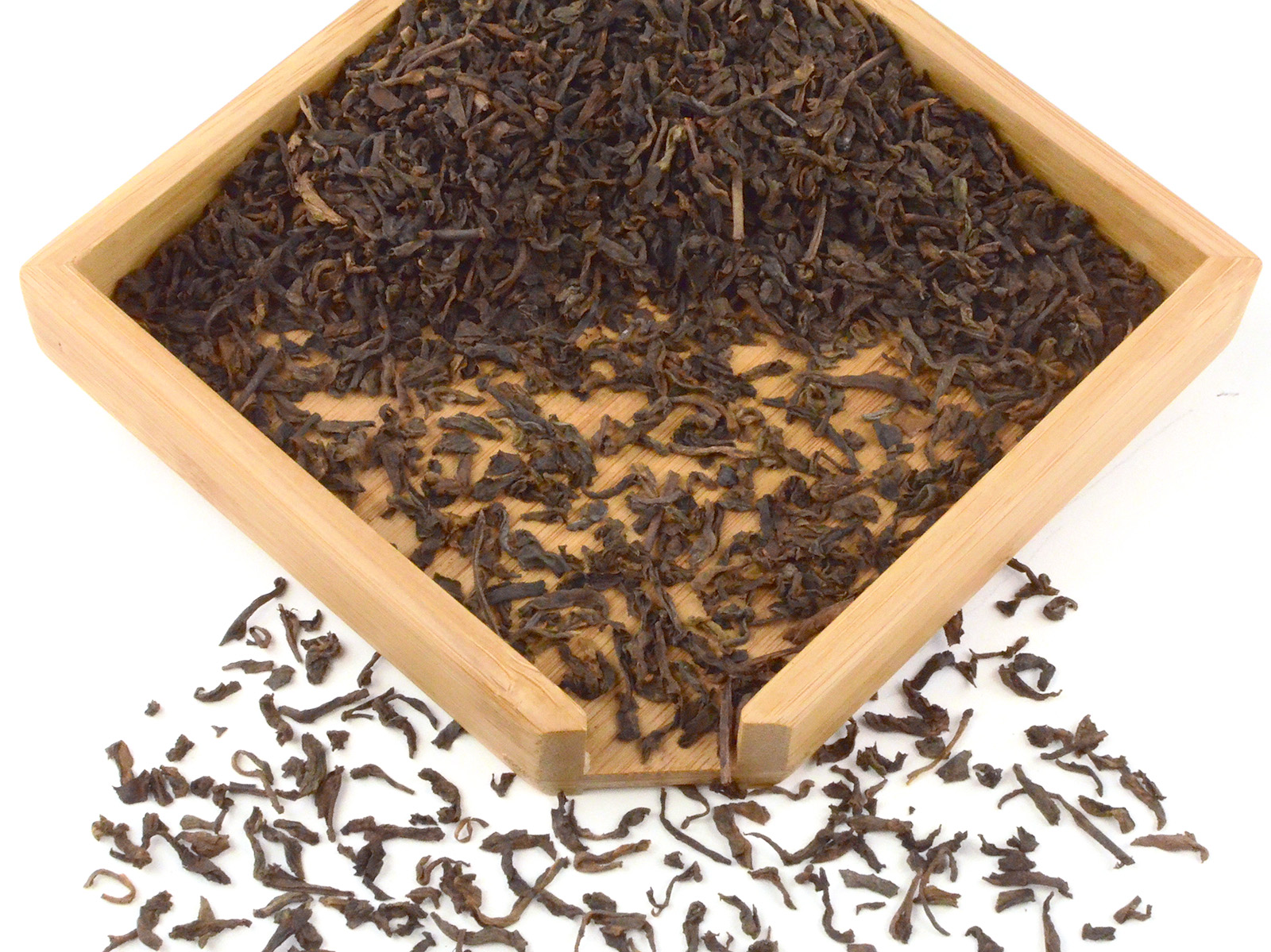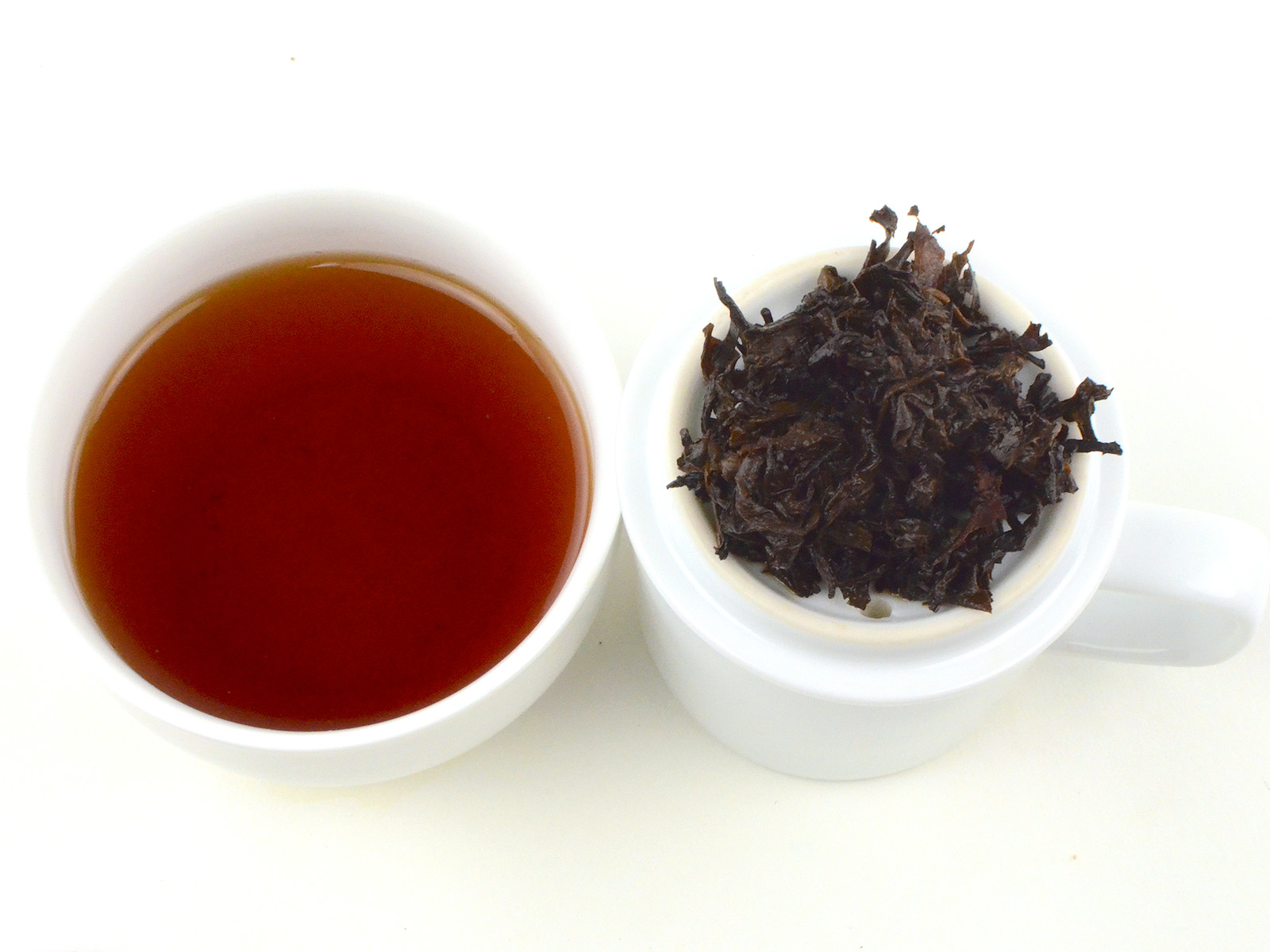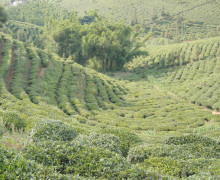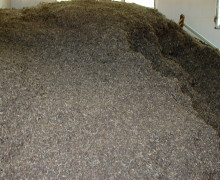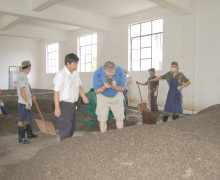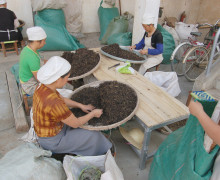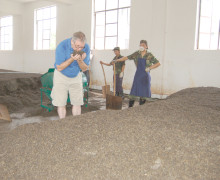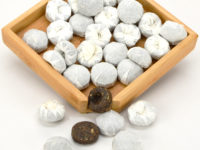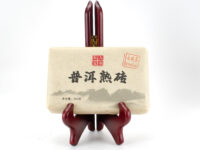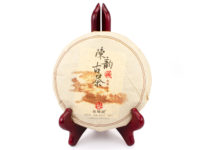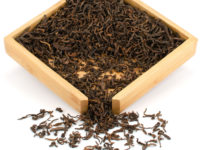Jia Cang (Home Store Puer)
Loose Leaf Shu Puer 2012
Made in the most popular style for everyday use and for storage at home, since aged puer develops a sweeter taste and is considered to have greater health benefits. The medium-sized mature leaves provide for a dark red-brown brew with a deep, robust flavor that is both sweet and smooth.
- Tea Origin
- Jinggu County, Pu'er City, Yunnan Province, China
- Tea Bush
- Yunnan Dayezhong (Yunnan Large Leaf Tea Tree)
- Tea Maker
- Hu Haoming and Wang Xiqun
- Harvest Time
- May
- Plucking Standard
- One bud, two leaves
The medium-sized leaves in this tea provide for a deep, robust flavor. The infusion is a dark brown color with shu puer tea’s signature reddish overtones. This tea is both sweet and rich without earthiness, making this an affordable option for people who are new to shu puer and want to try a smaller amount without investing in a cake.
Aged puer tea has greater health benefits and a sweeter taste, so Chinese people like to store some puer tea at home for later use. This shu puer is made in the most popular style for everyday use and for storage. Shu puer used to be more popular in China than sheng puer, used as a home remedy for soothing stomachs during illness or after eating rich foods. Families in China like this grade of puer because it is affordable and very easy to store. It is also popular for its rich taste.
Origins of shu puer tea
More than one third of Yunnan teas are grown in Xishuangbanna, the region where puer tea originated over a thousand years ago. Puer tea was named after Puer City (these days renamed Simao), the city in Xishuangbanna where this category of tea was first traded. Our Home Store shu puer tea comes from this region.
Depending on humidity and temperature, sheng puer requires 10 to 20 years of aging to change from a robust, heavy flavor to a smooth and slippery taste. Shu puer is ripened by special process that creates a dark, smooth tea in only 60 days. This shu puer processing method was developed in the early 1970s as a quicker alternative to aging sheng puer.
Processing shu puer
Tea masters wait to collect all the mao cha from different regions before processing it into shu puer. All grades of leaves are piled about 80cm high on one side of the clean factory floor. Tea is processed in batches of 6-20 tons at a time. The leaves are covered with cotton fabric, and sometimes gently sprayed with moisture on the top. The tea will create heat inside, naturally fermenting and growing microbes. Puer factories themselves have rich microbial environments from years of fermenting puer teas.
The tea master checks the piles everyday to test the temperature of the tea. Puer factories have their own specific methods of fermentation and cooling down the tea, as to not over-ferment the leaves. Every few days, workers will use large wooden shovels to transfer the tea from one side of the factory to the other. The leaves stick together during the fermentation process and must be separated for even heat. This re-piling process is repeated over and over again until the leaves eventually turn dark brown. This takes approximately 60 days.
The tea master must carefully control the temperature and moisture that is given to the leaves, depending on the season. Too much moisture will speed up the fermentation process and result in a strong ocean smell. Many cheap puers on the market are made in about 40-50 days instead of 60. After fermentation process is finished, all of the leaves are dried in an oven. They are then sorted by a machine to sort out the different grades by leaf size. The smallest leaves are 1st grade and the largest are 10th grade.
No chemical fertilizer, pesticide, or herbicide was used in the production of this tea. Click here to read more about our promise to fair trade and the environment.
Jia Cang (Home Store Puer) 2012 brewing guidelines
5 grams (1 Tb) tea
12 oz 100°C (212ºF) water
4 min. first infusion
At least 5 infusions: 4, 4, 5, 8, 10 minutes

